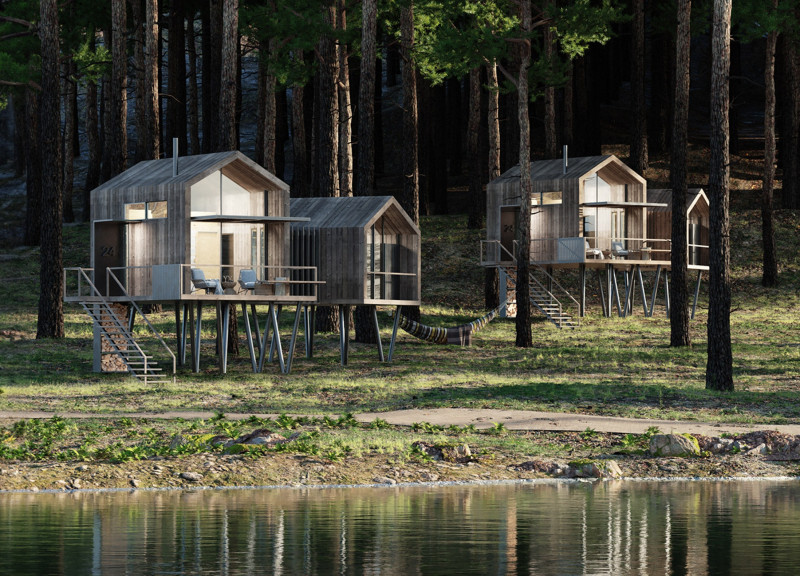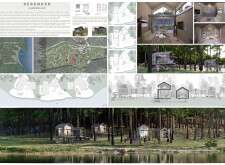5 key facts about this project
**Overview**
The Serender project is situated in the İkizdere region of Rize Province, Turkey, within the İkizdere Longoz Forest National Park along the Black Sea coast. The initiative focuses on creating a unique glamping experience that blends luxury accommodation with a strong emphasis on ecological sustainability and harmony with the natural surroundings. The design is intended to foster a close relationship between guests and the landscape, providing an immersive lodging experience.
**Spatial Strategy and Environmental Integration**
The architectural approach prioritizes minimalism and integrative design, resulting in structures that minimize ecological impact while enhancing guest experiences. The buildings are arranged in a network of interconnected units, offering varied degrees of privacy and communal areas that encourage social interaction among guests. This layout supports exploration of both individual accommodations and shared spaces, promoting a sense of community.
Elevated on stilts, the sleeping units enable an unobstructed flow of the landscape beneath and address potential environmental challenges, such as flooding and soil erosion. Large windows provide expansive views of the forest and lake, further immersing occupants in the surrounding natural environment.
**Materiality and Design Considerations**
Material selection plays a crucial role in the project's ethos, with a focus on local sourcing and sustainability. Key materials include laminated timber and planks for structural elements, which offer warmth and texture, while expansive glass windows facilitate natural lighting and views that connect the interiors with the outdoors. Minimal use of local stone for foundations and pathways respects local geology, and durable metal elements, such as aluminum or steel, are incorporated for modern aesthetics.
The design reflects traditional Turkish architectural elements, seamlessly integrating contemporary techniques with local cultural identity. Each unit's modular design allows for future adaptability, ensuring responsiveness to visitor needs and environmental contexts while preserving the natural landscape.



















































